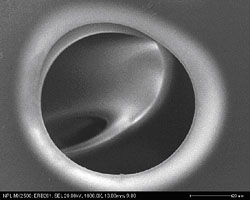Metrology on a cellular scale - project outline
 Meeting the increasing quality of life expectations of the ageing population of Europe represents a grand challenge to governments and health providers. New forms of therapies, based on stem cells and tissue engineered medical products offer the hope of developing customisable implantable artificial tissue.
Meeting the increasing quality of life expectations of the ageing population of Europe represents a grand challenge to governments and health providers. New forms of therapies, based on stem cells and tissue engineered medical products offer the hope of developing customisable implantable artificial tissue.
Objectives
To develop measurement technologies for characterizing cellular behaviour in regenerative medicine products and processes through the development of internationally accepted measurement technologies and standards.
How will the Objectives be achieved
Currently there are no internationally agreed protocols for assessing spatial or temporal changes in cell viability/behaviour within a matrix, where the matrix can be native tissue or a porous structure (tissue scaffold). Methods, such as optical coherence tomography, are being used to image cells within matrices but there are issues of penetration, resolution and interpretation that need to be solved or understood before the full value of these approaches can be realised. Biochemical analysis of selected biomarkers is also used to assess cell behaviour but these typically involve cell lysis which destroys spatial information. Comparing the results obtained by different techniques is also difficult due to the lack of characterisation procedures both for the cells and the surrounding matrix. The latter limitation is a keystone for this project i.e. the development of reliable measures for characterising surfaces and cells prior to combining them in a controlled way.
The project will also consider new methodologies for imaging cells in situ such as coherent anti-Stokes raman spectroscopy (CARS) and desorption electrospray ionization (DESI) that do not require the cells to be labelled using, for example, fluorophores. Comparisons will also be made with existing technologies that do use labelled cells to establish whether the act of labelling has any influence on cell behaviour.
This project will form the basis of a European Centre for excellence in metrology for regenerative medicine that will facilitate commercial exploitation of tissue engineered products
